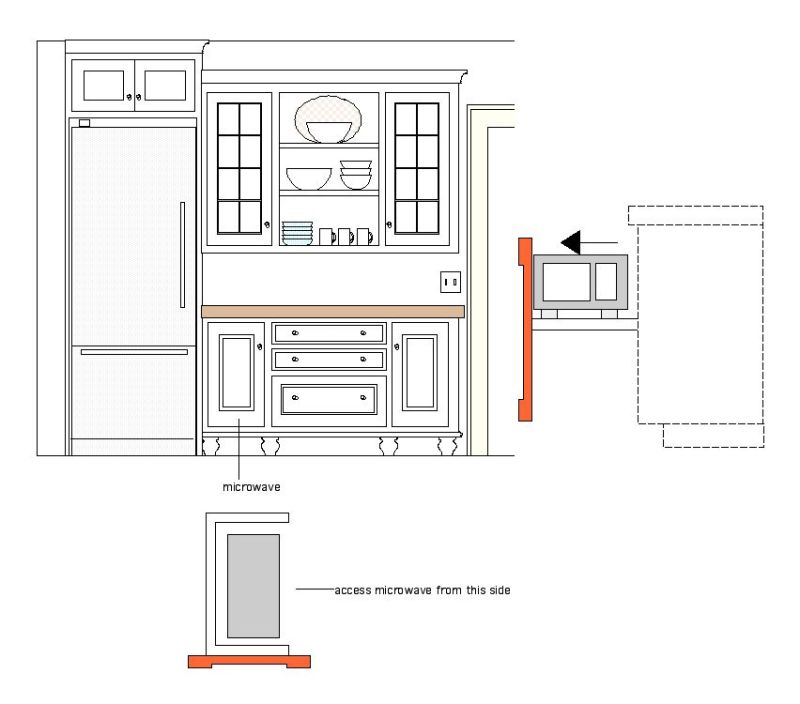Cabinetmaking Forum -- 32mm: Imperial Versus Metric
Frameless cab systems use metric measurement. Your crew will make the transition with ease, but you'll still need to talk feet and inches to most customers. August 29, 2006
Question
We are gearing up to build our first kitchen in a true 32mm system. Do you put your imperial measuring devices into the corner and use metric? Which system do you turn to in order to build your cabinetry in your shop? We think we should stick to what we are used to, keep inches and do only the math in the office for the figuring out the lay out of holes and such, and keep our guys on the floor happy with their system of measuring. What is the answer?
Forum Responses
(Cabinetmaking Forum)
From contributor A:
Metric is much easier. 32mm is 32mm, not 1-1/4”.
From contributor B:
Go into your shop this weekend and change all the verniers on your equipment to metric. Give everybody a metric tape rule on Monday morning. A couple of inexpensive digital calipers would be useful as well. Your crew will be fully adept with the metric system by Wednesday. They will be passionate supporters a week later. You might find a couple of stragglers, but these people struggled with imperial anyway.
From contributor C:
100% metric. In metric, when you have two linear dimensions to add, you don't have to use fractions. It's awesome.
From contributor D:
Metric is much easier, but I have not been able to ignore imperial. We often get measurements in inches. Much of our equipment is digital, so we can convert easily between inches and mm. We have dual read tapes and let the guys choose. Our drawings are generally 3 places in imperial. When I need to get an accurate measurement, I read in metric and convert to imperial. It is much easier to estimate 1/4 of a mm, than 1/64".
From contributor E:
I see the advantages to the metric system but until there is a global change to metric, there is always going to the need to convert. When a customer asks "How wide is that cabinet", it wouldn't do me any good to tell them 762 mm. We really can't change over completely until the consumers do. I am hoping they never do so I don't have to change. There is something nice about the tradition of working with fractions.
From contributor F:
I believe the world is mostly if not entirely metric. We had our chance many years ago in the US - I remember when we voted whether to use metric or inches, and metric lost out. Funny thing is we are already metric with our currency - 1 dollar = 100 pennies, one dime = 10 pennies, etc.
With my shop being metric, I do say there are a few times when we do still use feet and inches especially when talking to customers. We still print the occasional elevation using feet and inches per request of customer.
From contributor C:
While everything we do in-house is metric, we produce shop drawings for architect and contractor review in imperial, because if we gave them metric, they most likely wouldn't know what to do with it. But it's gotten to the point in our shop where I tell one of the guys 24 inches and they give me this blank look. 609.6 millimeters they understand!
It's like languages. You wouldn't speak Mandarin to someone who only speaks Cantonese. The advantages to an all metric shop are tremendous and well worth the hassle of converting dimensions for clients. Occasionally we get a client from Canada and it's smooth sailing.
From contributor G:
We use imperial in decimals, like most machine shops. I do the design and layout to .001 accuracy, and most of the precision stuff is cut on the CNC. Building face frames is the part of the process that I haven't been able to eliminate human intervention. I would like to find a tape measure that reads in imperial/decimals, but so far no luck.
This system is simple for anyone who comes from a metalworking background, but can be challenging for woodworkers. I keep a few conversion charts (1/16 = .0625 etc.) around the shop and after a few days or weeks newbies seem to catch on, but it takes about a year before they stop whining about it. You have to be in imperial sooner or later to communicate with the general public, so converting to metric cannot be complete, although you can count me in to support throwing out the imperial system and switching to metric across the board.
From contributor H:
Like most we deal with the outside in imperial but use metric in the shop – it is a much better system. If Congress wasn't such a bunch of wimps we'd have all been on the metric system 30 years ago.
